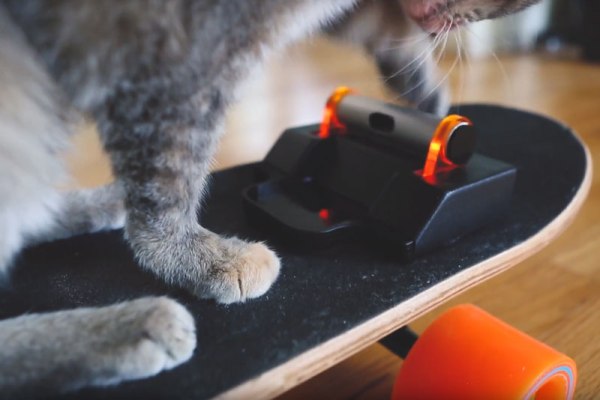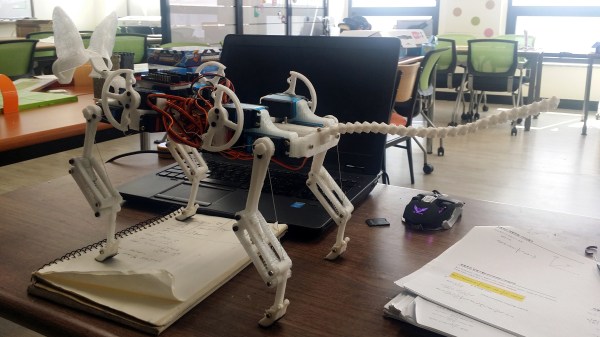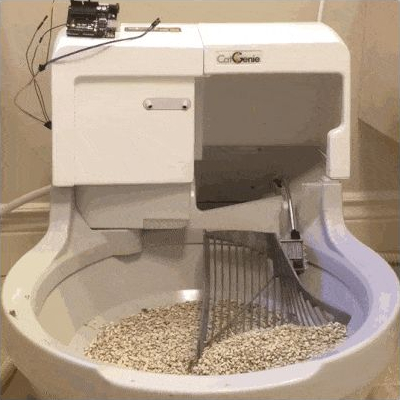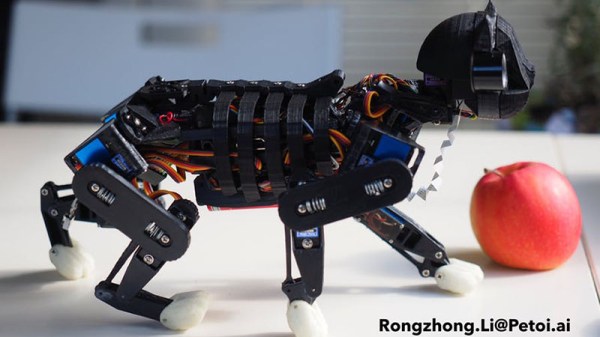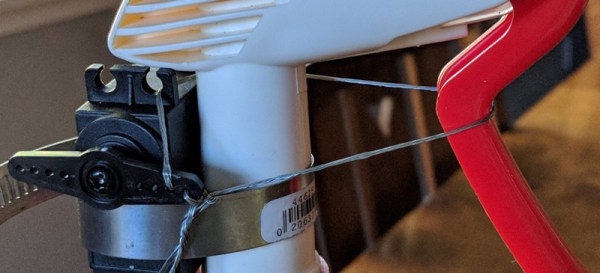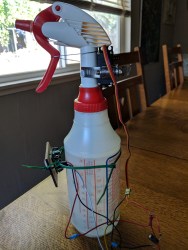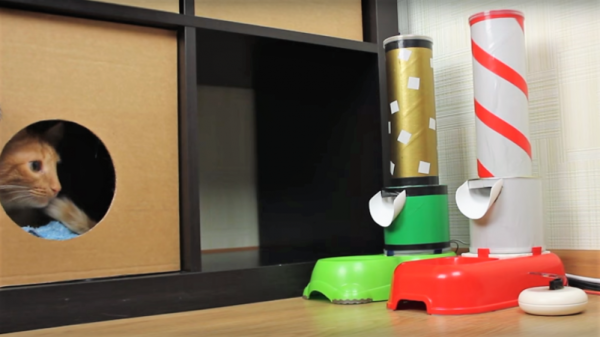Have you ever looked at your cat and thought “You know, my kitten really needs an electric skateboard!” Probably not, but this seems to have happened to [Kim Pimmel] while looking at his cat MIDI, so he decided to build one. This process involved building a simple, low powered skateboard with a Feather mainboard and motor controller combined with a laser-cut switch mechanism. When [Kim] puts a treat into the mechanism, the cat pulls the switch and the skateboard moves forward, moving into a brave new e-skateboarding feline future. MIDI looks somewhat unimpressed by this whole business, but I suspect that as long as the treats keep coming, he will be happy to keep on truckin’. Now, if he can just figure out how to persuade the cat to ollie, we will be really getting somewhere.
Feline tomfoolery seems to be a regular pastime here on these pages, and more than just a quest for easy moggy-driven clickbait. A lot of cat feeders and cat finders abound, but this project isn’t the only cat-operated one. Our readers’ pets can probably spot an Arduino a mile away by now.

